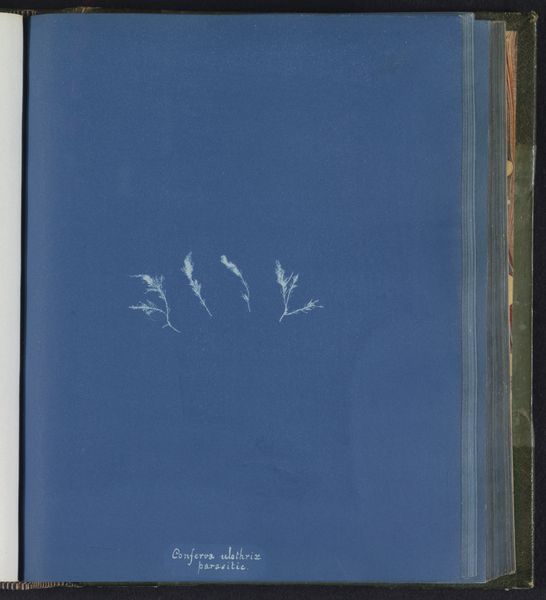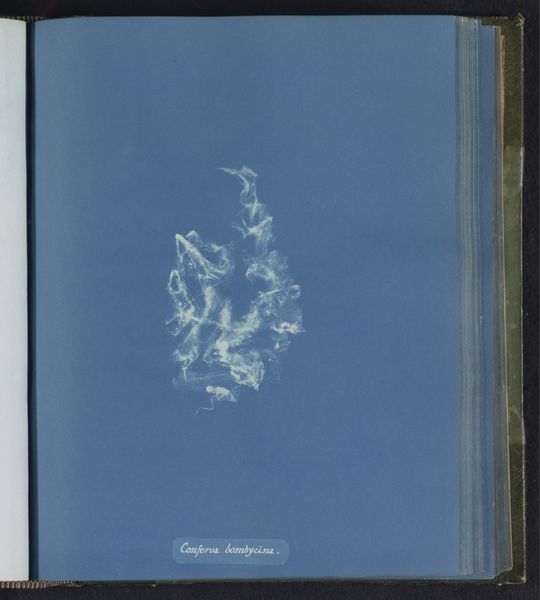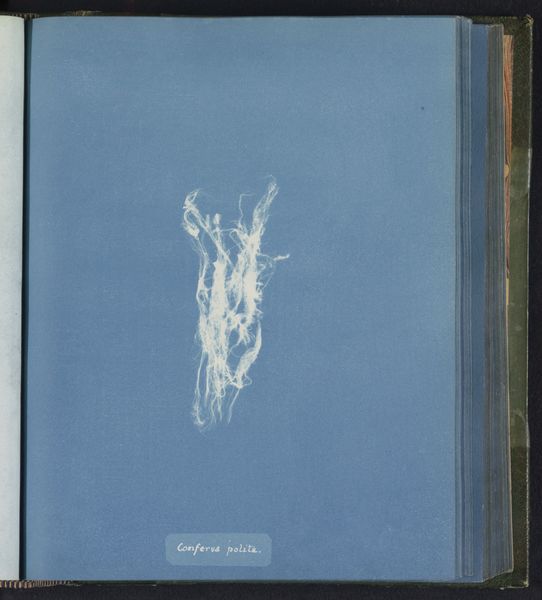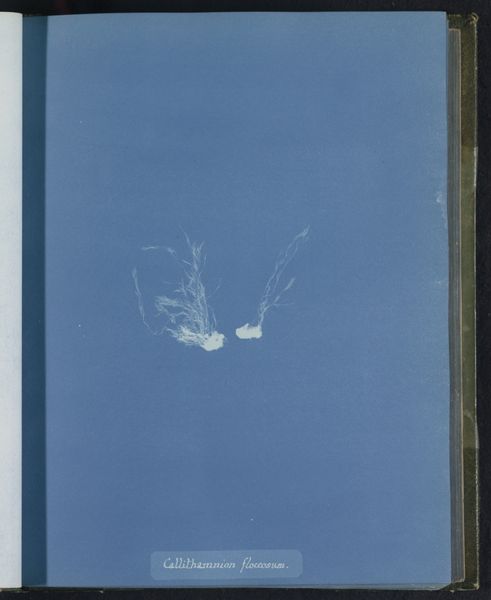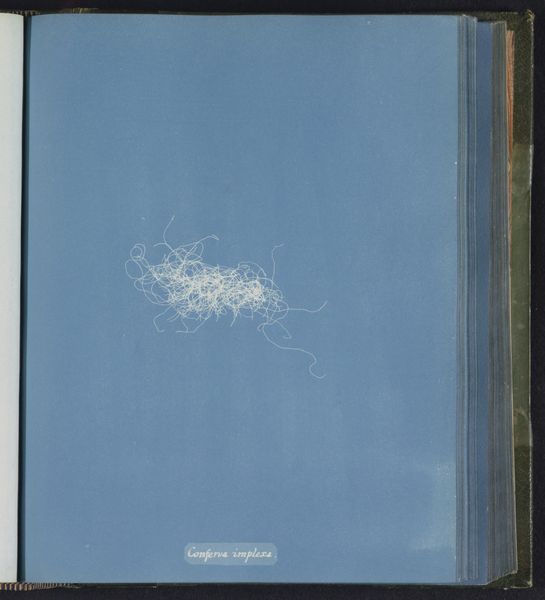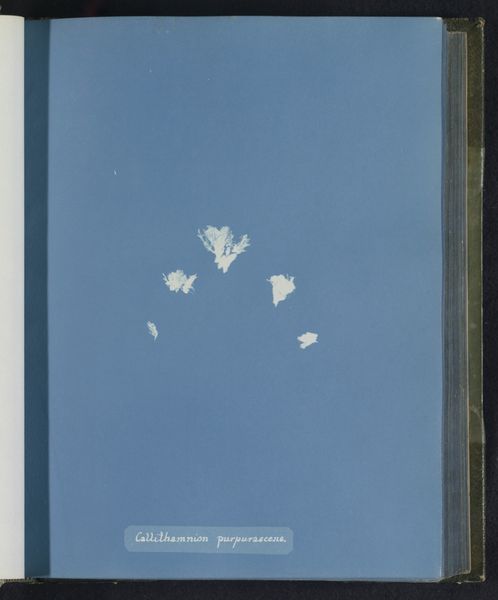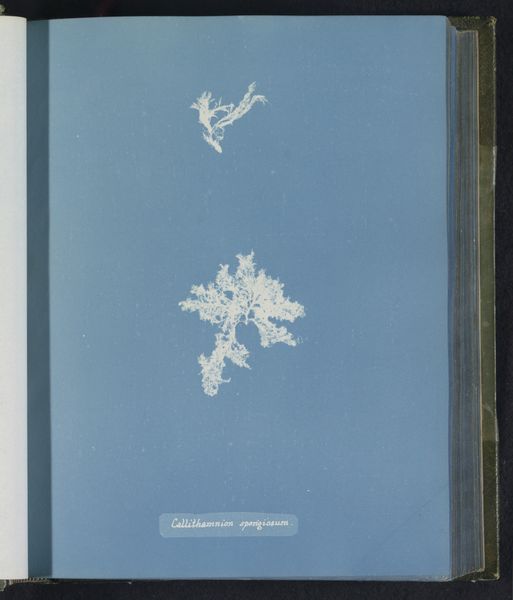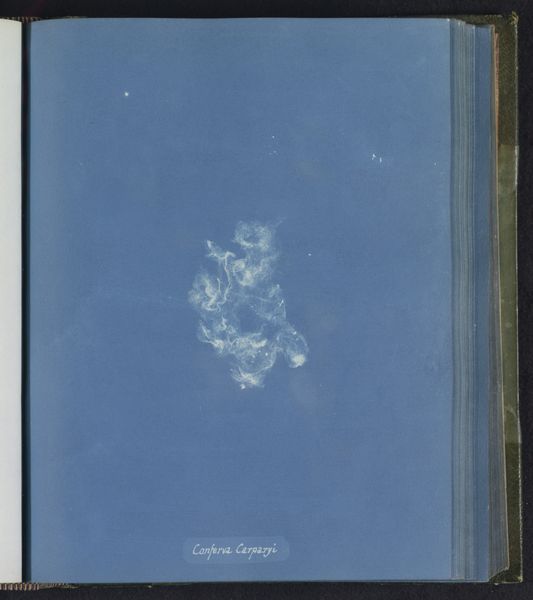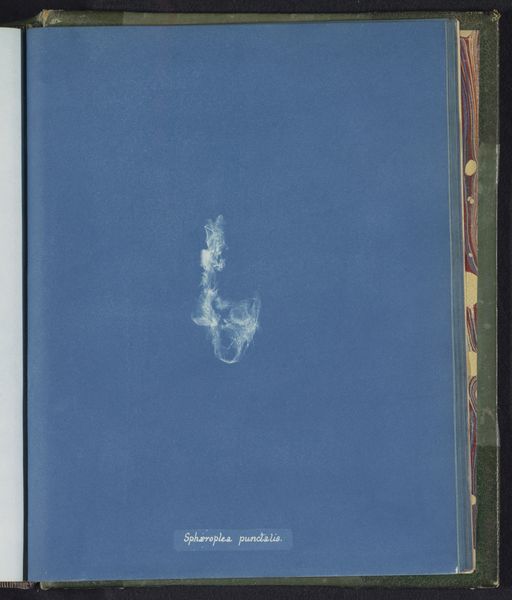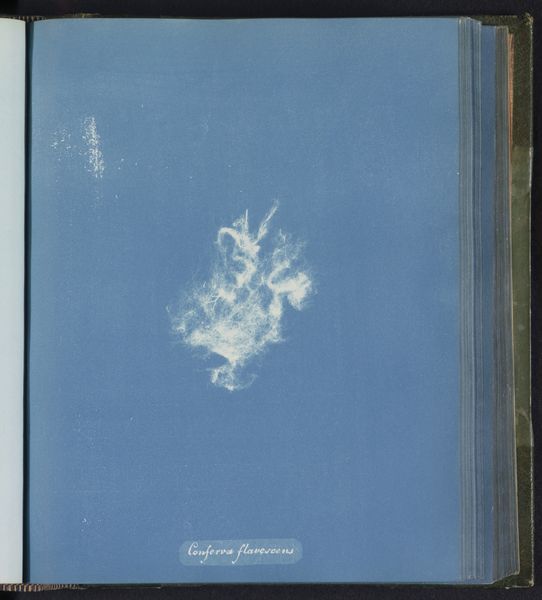
print, cyanotype, photography
#
aged paper
#
still-life-photography
# print
#
cyanotype
#
photography
Dimensions: height 250 mm, width 200 mm
Copyright: Rijks Museum: Open Domain
Curator: This intriguing piece is titled "Codium amphibium," created between 1843 and 1853 by Anna Atkins. It's a cyanotype, a very early photographic printing process, resulting in this distinctive blue hue. Editor: It's incredibly striking. The delicate, almost ghostly, seaweed form against that intense blue is so evocative. It feels both scientific and strangely romantic. Curator: Precisely! Atkins wasn't just making art; she was documenting the natural world. As a botanist, she meticulously recorded algae specimens using this innovative process. It raises questions about how we define artistic labor and scientific recording when we see it today. Editor: That context is crucial. The cyanotype process itself speaks volumes about the era’s intersection of science, industry, and aesthetics. Each print involved careful preparation of chemicals, exposure to sunlight, and precise timing – a laborious craft masked by its final, seemingly simple image. Were these images widely circulated or mostly confined to academic circles? Curator: Initially, these cyanotypes formed part of a private publication, "British Algae: Cyanotype Impressions," intended for scientific study rather than public consumption. But today, exhibiting her work, and discussing her position as a woman contributing to scientific study is vital. Museums now highlight how she straddled the boundaries of scientific documentation, artistic expression, and access to both fields during the nineteenth century. Editor: Right. Considering that dissemination—that tension between the object itself and the structures around it—becomes so central. I’m thinking about how the blue is simultaneously practical (for the process) and poetic, almost melancholic. Curator: Yes! The materiality—the specific chemicals and their interaction with light—created not just a tool for documenting Codium amphibium, but an aesthetic experience with its own specific place in photography's history. Editor: Absolutely. It reframes our expectations for how we understand the interplay between image-making, distribution of labor and artistic meaning. Curator: Indeed. This reminds us to carefully examine the historical forces shaping art’s meaning, value and function both within and beyond museum walls. Editor: It's amazing to see a botanical specimen turned into an object of contemplation. I can feel her devotion in rendering what she saw through science with her craft, I find it captivating.
Comments
No comments
Be the first to comment and join the conversation on the ultimate creative platform.
